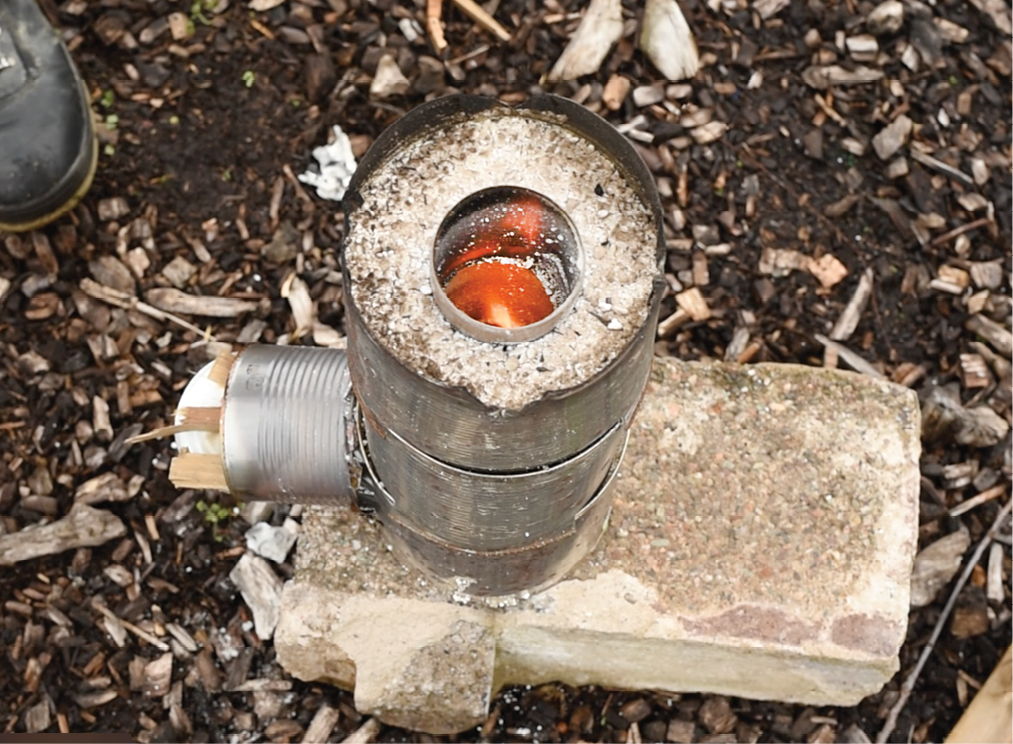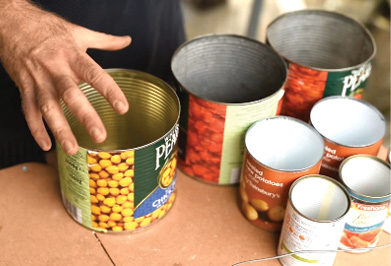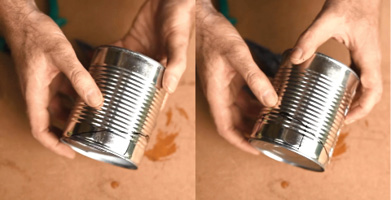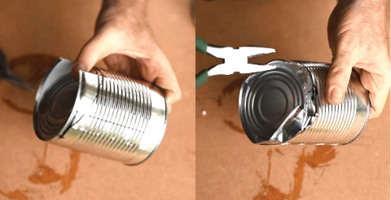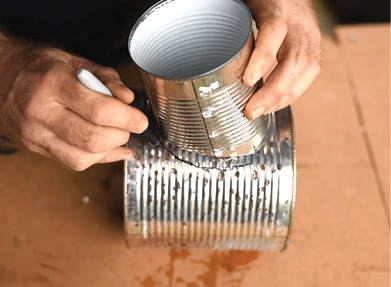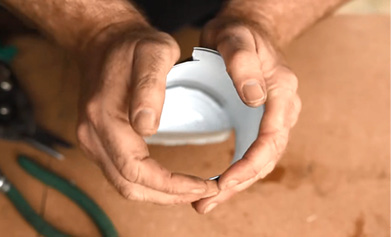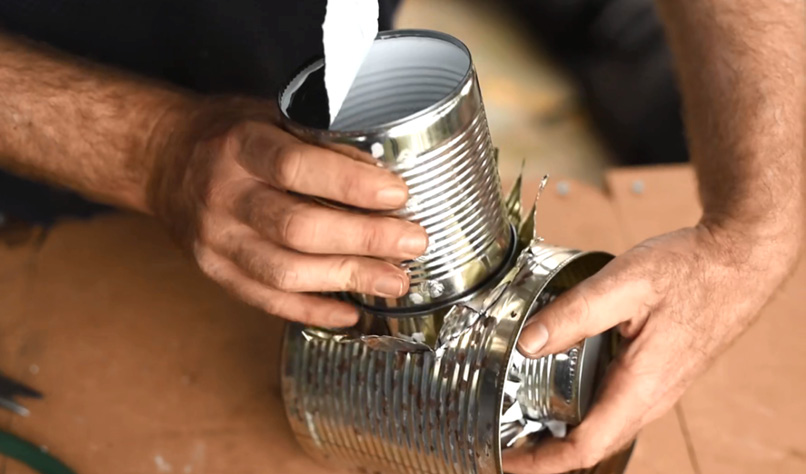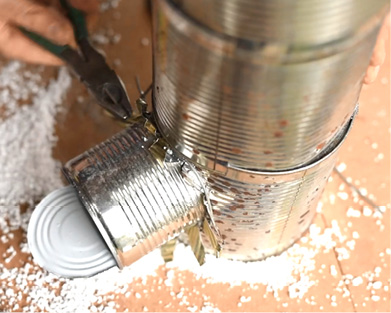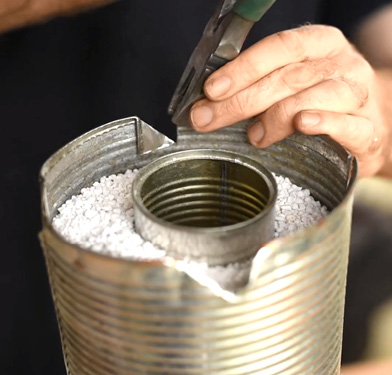

Here’s how to make a highly efficient, cheap, and easy-to-build rocket stove, optimized for cooking in off-grid environments. It can be made in less than an hour from a couple dollars’ worth of easily sourced, mostly scrap materials.
This is a good option for homesteaders, preppers, survivalists, and anyone camping or living off grid, but it’s also useful and fast to deploy in disaster areas and refugee camps.
Rocket Stove: How It Works

Rocket stoves burn hot but consume only half the fuel of other woodstoves, for two key reasons: efficient combustion, and efficient direction of heat. This makes them healthier too: They emit little or no smoke, and far less particulate pollution and carbon monoxide.
- Small-diameter fuel — sticks burn more efficiently than large pieces of wood, and extinguish quickly when cooking’s done
- Combustion chamber — elbow-shaped L-tube for horizontal fuel feed and vertical heat direction; aka burn tube
- Fuel shelf — admits small fuels only, allows airflow beneath
- Air gap — provides high air-to-fuel ratio for efficient combustion
- Insulated chimney — increases air draft and directs heat to cookware; confines wood gases and smoke in high heat for near-total combustion.
BUILD YOUR ROCKET STOVE
Before you begin, please watch my assembly video, and put on your work gloves.
FEEL THE BURN
It’s important the first time you light your rocket stove to do so outside, in a ventilated area, as that first fire will burn off all the plastics and other chemicals in the cans. After about 10–15 minutes of running at full temperature, that stuff should all be gone and the stove can be used in more enclosed spaces thereafter.
FEEDING FUEL
The best fuel for your rocket stove is dry, untreated wood, a couple of centimeters square and about 20cm–30cm long. This can be split kindling, or sticks and small branches.

Ideally you only want to have two or three pieces of wood in the stove at a time, as overfilling it will reduce the space for airflow. The ideal configuration is where the tube is about one-quarter full of hot coals (once it’s been running for some minutes to produce them) and one-quarter full of wood that’s fully ablaze, leaving half the space for air, as this will produce maximum flame, temperature, and efficiency .
Keep feeding the wood toward the back as it burns, adding a new piece when it’s fully burned away.
LIGHT IT UP
To light, place some paper or other tinder in the burn tube, followed by a few small sticks or splinters of kindling, followed by two or three larger pieces. It’s usually easiest to then light the tinder with a lighter or match through the air gap at the bottom.
The stove will produce smoke for the first couple of minutes, but this will reduce to almost zero as it comes up to peak temperature. If you see smoke after that, it usually means the fire is burning out and needs more fuel.
The stove should use about 80% less wood than an equivalent open fire, and produce greatly less smoke and emissions. The coals will burn completely to ash, and what little is left behind can be dispersed by blowing into the burn tube. I haven’t found cleaning to be much of an issue.
Ask questions and post your build on the Facebook Group, and find more low-tech projects at opensourcelowtech.org.


